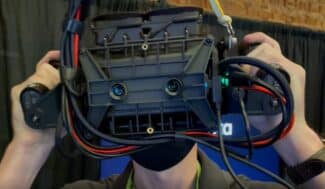At the recent SIGGRAPH computer graphics conference in Vancouver we spoke with Douglas Lanman, Meta’s head of display systems research, about high-dynamic range VR seen in the company’s Starburst prototype and the ‘grand challenge’ of passing the Visual Turing Test.
One day VR headsets might be indistinguishable from reality — passing what researchers have started calling the “Visual Turing Test” — but the path to that moment is still mired in haze due to what Lanman called the “grand challenge” of improving VR displays along competing parameters.
“Everything fights with everything else,” Lanman said. “Pancake lenses, yes, they’re less optically efficient but you can have this amazingly elegant and comfortable form factor. So now it’s a question: What do you as a user care most about? Do you care about comfort? Do you care about the aesthetics of the device? Do you care about the Visual Turing Test that I so care about? And what would you sacrifice to have it? Heavier headset? Shorter battery life?”
Starburst might help light the way forward. The bulky design is so heavy it needs to be suspended from above and, while it can be replicated using off the shelf parts, it can’t be considered a direct path to a consumer product. It does, however, deliver luminance as high as 20,000 nits. That means it can simulate almost any indoor lighting compared with the market-leading Quest 2 headset which tops out at just 100 nits. Put another way, Starburst can offer researchers a way to gauge where to target future headset designs along this particular parameter.
Check out our talk with Lanman summarized in the video below where he discusses the competing factors at play in realizing future VR headsets.





